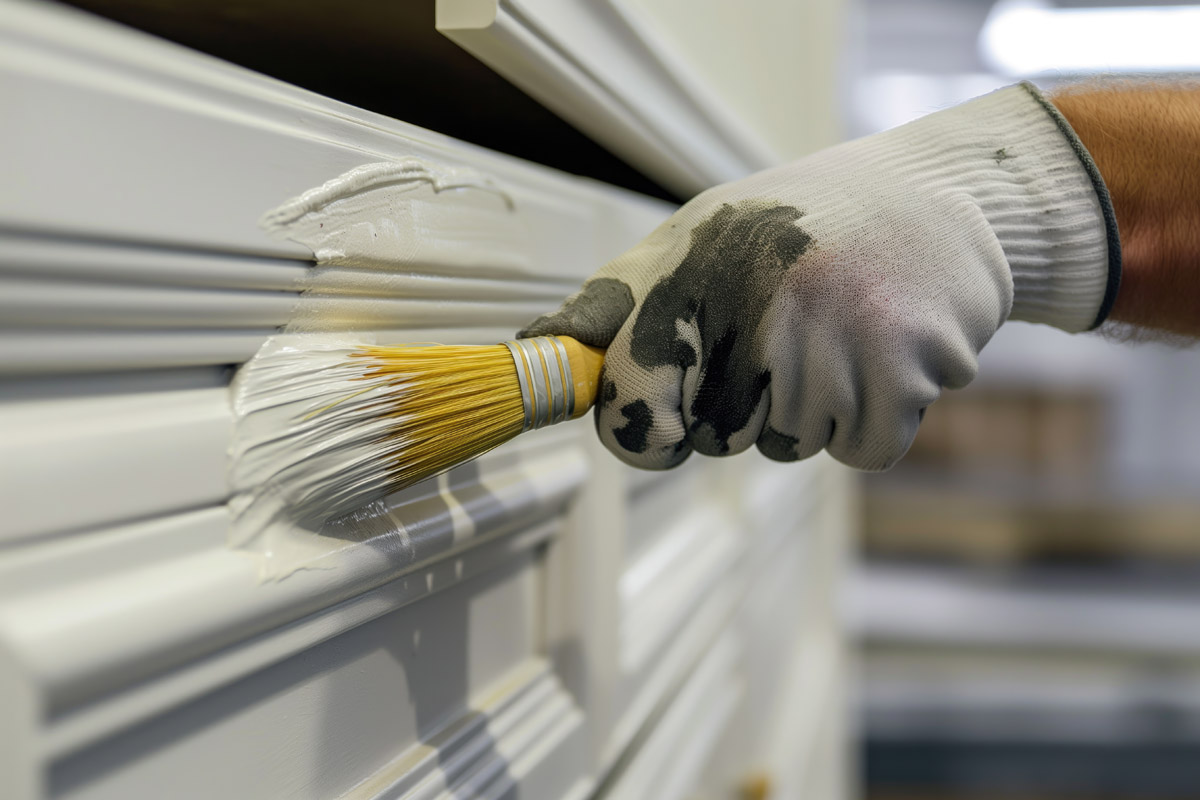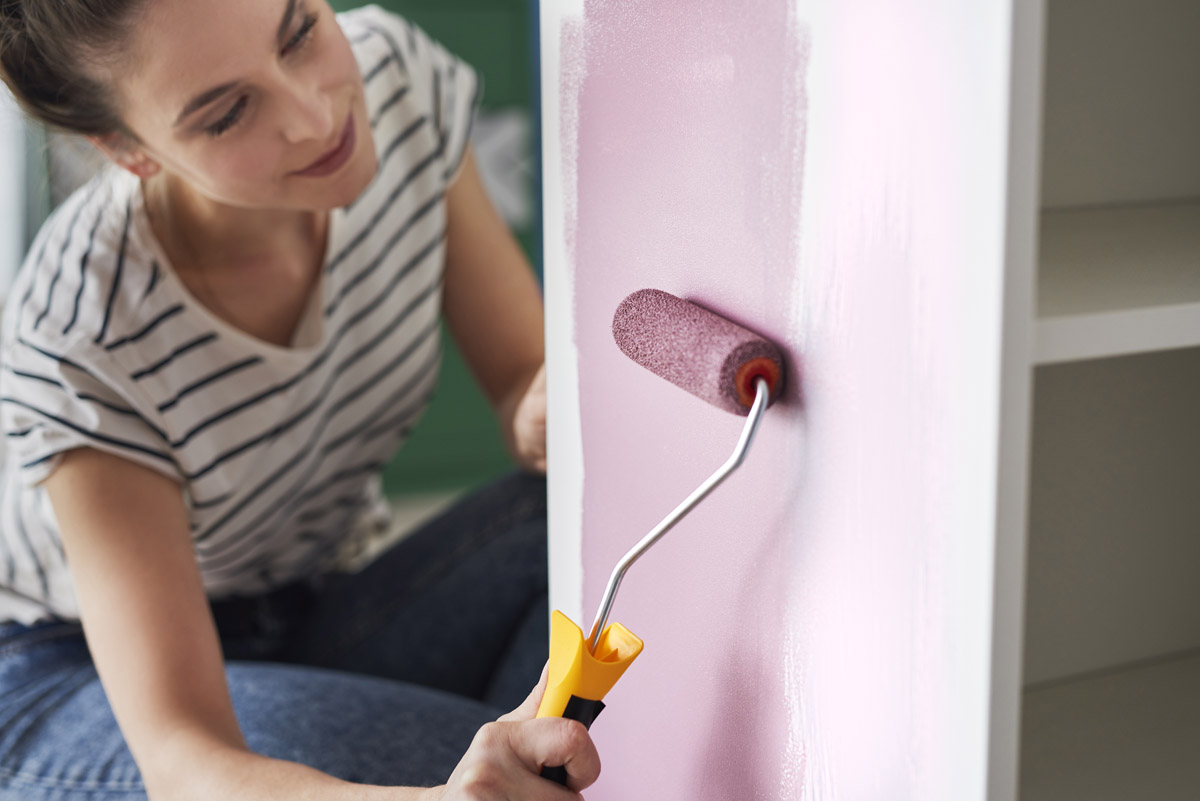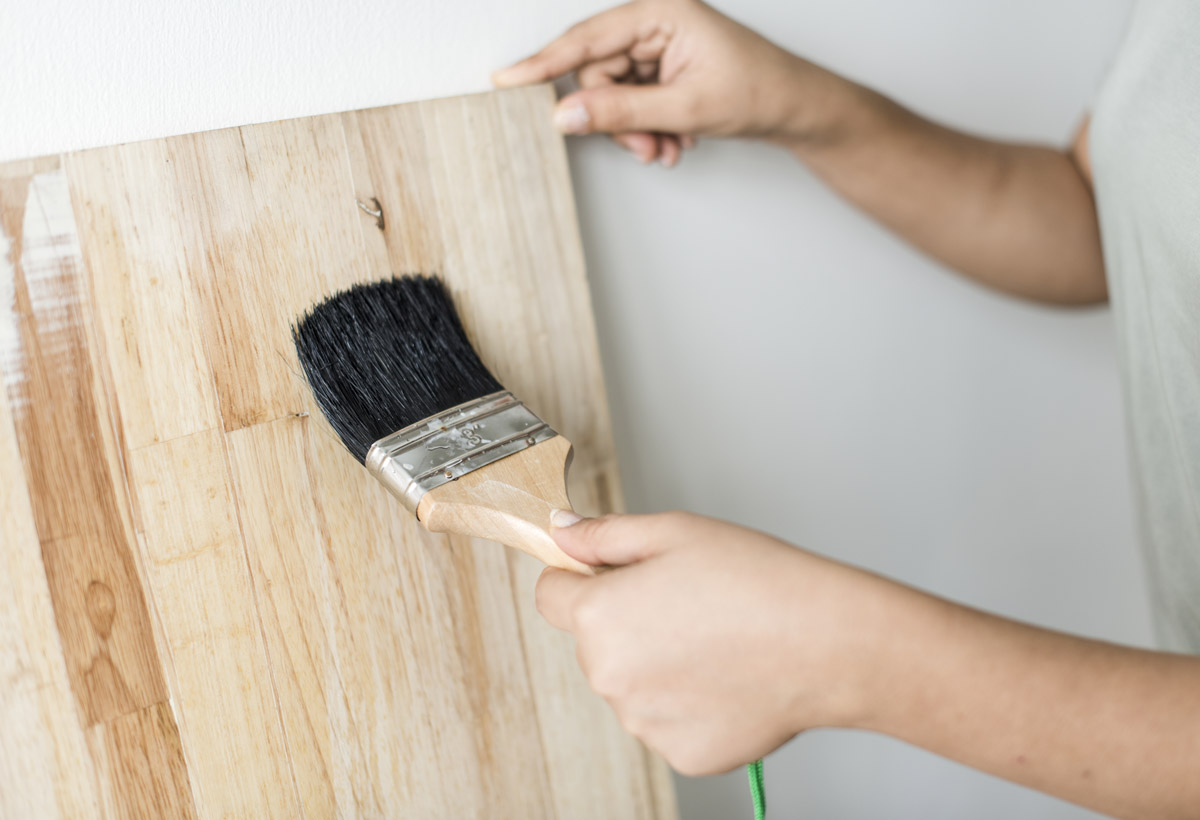Published: October 16th, 2025
If kitchen cabinets are worn out and have lost their original appearance, the facades can be updated. An effective way to restore and eliminate minor defects is painting. Specialists from the Artos company, operating in the city of Charlotte, share useful information about how much painting will cost.
Average cost of cabinet painting
The cost ranges from $1,000 to $10,000–12,000. The wide range is explained by the fact that several factors influence the final amount, which we will describe below. But first, for general understanding, let’s give average values for kitchens of different sizes:
Small. If the room area is less than 100 square feet, professional painting will cost between $1,000 and $4,000. Painters offer discounts for large-scale projects. Therefore, if the kitchen is small, the owner will eventually pay $10–20 more per facade than the owner of a large kitchen.
Medium. Such a room contains 20 to 40 facades, and professionals charge about $175 for each door and about $100 for each drawer front. For example, if a kitchen has 25 doors and 10 drawers, the renovation will cost around $5,400.
Large. Large kitchens can have 40 or more cabinets, and for that volume, the owner will receive a discount from the painter. The total amount will range from $7,000 to $12,000. Each drawer front will cost about $95, and each door about $165.

Factors affecting painting cost
Several factors influence the cost of painting work.
Type of paint
Naturally, the cost depends on which paint is used.
| Type of paint | Cost per gallon ($) | Advantages | Disadvantages |
| Acrylic or latex | 20–60 | – Water-resistant- Minimal odor- Easy to clean- Popular and widely available | Not the best compatibility with wooden cabinets |
| Alkyd | 40–90 | – Dirt- and water-repellent properties- Suitable for humid rooms- Durable and dense coating | – Dries slower than acrylic- Higher cost (compared to others) |
| Oil-based | 30–70 | – Glossy aesthetic finish- Resistant to fading and discoloration | – Strong odor- Slow drying- Possible bubbling during application |
Paints are also divided into premium, mid-range, and budget categories. Premium ones are high-quality and expensive, creating a beautiful, durable, dense coating. Mid-range paints offer optimal quality-to-price balance. Budget options are cheap but may not deliver the desired effect and sometimes require more coats than premium materials.
Colors
The shade of paint can also affect the cost. The most popular colors — black, gray, white, beige, and wood tones — are cheaper than complex or rare shades.
Consider the original color of the cabinets and the desired final one. For example, if you want to repaint dark facades into light ones, more paint will be required to fully cover the original tone without gaps or unevenness. The same applies to repainting light cabinets into dark colors.

Cabinet types
The type and material of cabinets also influence the cost. For example:
- Solid wood. Painting wooden furniture is expensive due to the complexity and thoroughness of preparation. On wood, especially after long use, cracks, raised fibers, and other defects may appear, requiring sanding and priming to achieve smoothness.
- MDF or laminated particleboard. These materials are cheaper to paint because they are smooth and less affected by external factors. Facades can be painted without multi-stage preparation and with fewer layers.
- European-style cabinets. These are frameless and have no front panel, which makes painting more complex and requires more skill and effort.
- Designer cabinets with decor (such as overlay panels, glass inserts, moldings, or carvings). Painting or avoiding paint on decorative elements takes more time, experience, and care, increasing labor and cost.
The initial condition of the cabinets is also important. If they are new and defect-free, the work will go faster and require no complex preparation — sanding, filling, or priming. Thus, costs for additional materials will be lower, and less paint will be needed.
If the kitchen furniture is old, heavily worn, or damaged, the renovation will be larger in scale and more expensive. This is due to the need for additional materials and tools and hiring specialists. More paint will also be required.
Kitchen size
On one hand, the larger the room, the more cabinets and the higher the cost. On the other hand, many contractors and private painters offer good discounts for large jobs. Therefore, if you calculate the cost per square foot, restoring cabinets in a small kitchen will ultimately be cheaper than updating furniture in a large one.
Painting method
The painting method also affects cost:
- Roller or brush. This method is affordable and economical but not the fastest. To achieve full coverage with liquid paint, several coats may be needed, increasing paint consumption and labor costs.
- Spraying. This method requires special equipment — a paint sprayer and sometimes a spray booth. The process is fast but more expensive.
- Artistic painting or hand painting. This is the most expensive option since it requires skilled artisans and takes a lot of time.
Average cost of DIY cabinet painting
If you decide to paint kitchen cabinets yourself, materials will cost $200–600. The total amount depends on kitchen area, ceiling height, number of furniture pieces, type, color, and quality of paint, and painting technique.
Painting or staining kitchen cabinets
Painting costs about 10–15% more than staining. However, paint gives solid color, allows for radical tone changes, and creates a desired texture — glossy, semi-matte, satin, or matte.
Stain is cheaper but suitable only for natural wood and used for decorative purposes — highlighting natural grain and texture. There are tinted stains that make wood darker or reddish. Stains also protect against mold, which is important for humid kitchen environments.

Cost of painting vs. replacing kitchen cabinets
DIY painting is cheaper, but it is labor-intensive, time-consuming, and not always yields the desired results. Professional work is more expensive but higher in quality.
The most expensive option is replacing the cabinets. The cabinets themselves cost $4,000–12,000, plus installation — $3,000–8,000. But sometimes replacement is the only viable option. If the cabinets are old, severely damaged, or made of low-quality materials, replacement can be better and even more economical than complete repair, restoration, or repainting. To save money, you can purchase standard cabinets in classic shades without complex fittings.
Additional expenses to consider
The budget should include the following costs:
- Preparation. Affects both expenses and final results. Preparatory work includes sanding, replacing faulty fittings, and priming — all of which cost money.
- Auxiliary materials, tools, and supplies — handles and fittings, brushes or rollers, primer, filler, sander (if not owned), sandpaper, masking tape, and protective film.
- Finishing materials. If you decide to replace or reface facades, you’ll need furniture film, veneer, or even new doors.

Tips for saving on kitchen cabinet painting
To save on painting, follow these recommendations:
- Choose affordable mid-range paint. It delivers good results and costs less than premium materials. Check recommendations and reviews. Don’t buy the cheapest paints — they consume more. Avoid complex colors and finishes like metallic or glaze. Choose standard options.
- Don’t change the color drastically. It’s better to refresh the original shade or alter it slightly. Radical changes require many layers.
- Don’t replace fittings if they are functional and visually fine. You can repaint or polish them instead.
- Do preparatory work yourself. You can remove handles, take off doors, strip old coatings, and apply protective film. With basic tools and skills, you can also locally sand, fill, and prime surfaces. But if you’re unsure, leave this to professionals.
- Choose your contractor carefully. Contact several companies, compare offers, evaluate cost, experience, portfolios, and client reviews.
FAQ
Are there eco-friendly paint options for cabinets?
Yes. The following types of paint have the least environmental impact:
- Water-based alkyd paints. They dry fairly quickly, have minimal odor, form durable coatings, and are safe for humans and pets.
- Silicone paints. Water-resistant, long-lasting, odorless, but quite expensive.
- Oil paints. Contain natural components that are safe for health and resistant to low temperatures and high humidity.
- Water-dispersion paints. They require dilution with water before use but become water-resistant after drying.
Which is more cost-effective: painting cabinets or replacing them?
Can I save money by painting cabinets myself?
